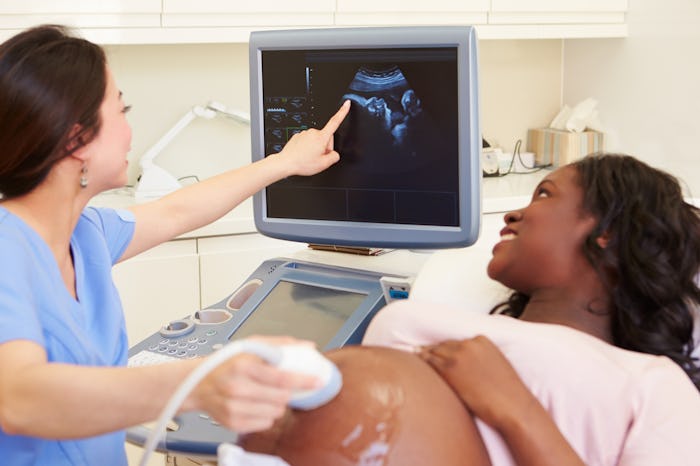Life

What Do The Stations Mean In The Final Weeks Of Pregnancy?
As you near the end of your pregnancy, your trips to the doctor will increase to every two weeks, and then every week. At these doctor visits, your OB-Gyn will perform pelvic exams to determine the position of your baby and make sure everything is going as expected in preparation for labor. You'll probably hear the word "station" at your pregnancy visits and even when you go into labor. But what do the stations mean in the final weeks of pregnancy? It's a good idea to be prepared, so that you know what the doctors are referring to.
According to Healthline, "station refers to how far down the baby's head has descended into the mother's pelvis." The doctor will start to check the baby's station in the last month of your pregnancy, making sure your cervix is ripening and that the baby is positioning properly. If your baby is breech, their feet or bottom will enter your pelvis first. But for the majority of pregnancies, the baby's head will be down. Your baby's station is measured from negative three to positive three and, according to the University of Michigan's health library, once your baby "drops" or you experience "lightening" (when your baby starts lowering into your pelvis) they've entered the negative three station.
Healthline stated that as your baby descends lower, while you're in labor, and their head reaches your pubic bone, or "mid-pelvis," they're in zero station. At this point, the baby is "fully engaged" and can sometimes be delivered with forceps if necessary. Although they don't have far to travel, moving from station to station can sometimes take a long time, especially if your baby is turned in a particularly difficult position.
When your baby's head exits the pelvis and starts crowning, they're at positive three station, according to Cigna. At this point, you'll probably begin to push and your baby will be in your arms soon.